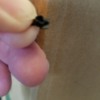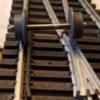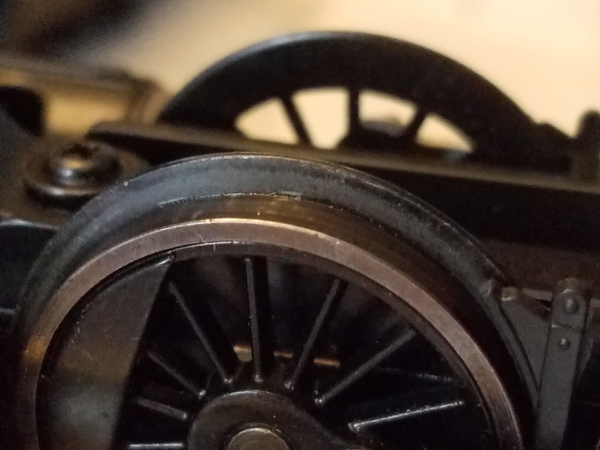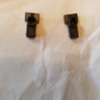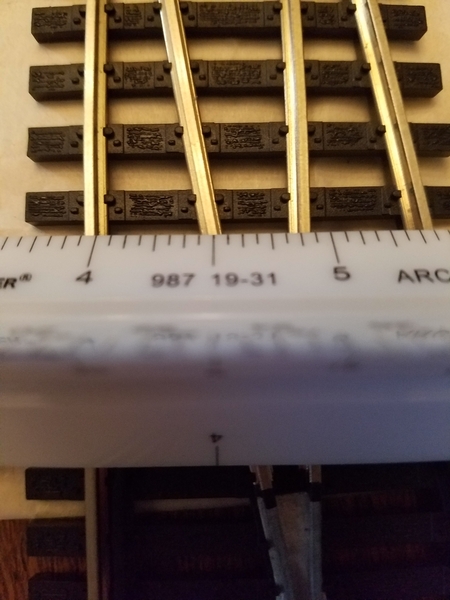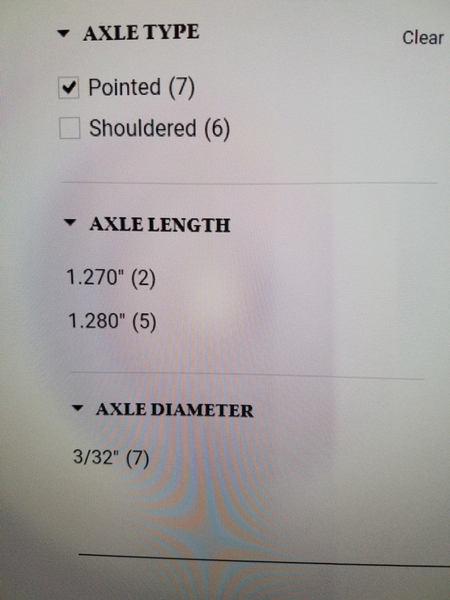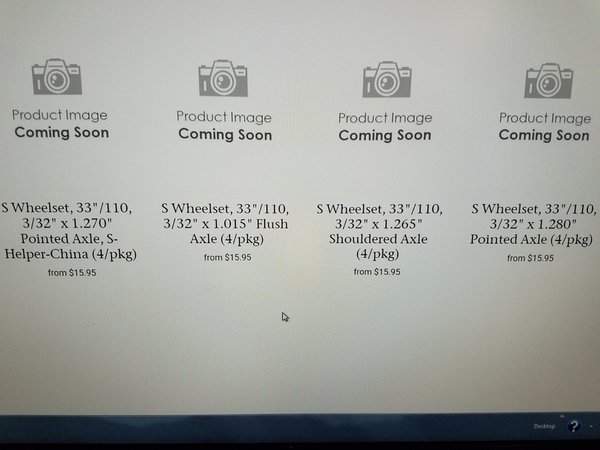I need all of your help again. I sent my question to Sarah to see if she can help first, if she can't. Do any of you know what size scale wheels I can replace the deep flange wheels with on the tender, trailing and forward trucks. I tried the tender through the #5 test switch, it rides up over.
Replies sorted oldest to newest
According to 765's spec sheet:
Pilot and tender wheels are 33".
Trailing truck is 35" and 43" respectively.
Rusty
I have used Northwest Shortline wheels to make these changes.
@Rusty Traque posted:According to 765's spec sheet:
Pilot and tender wheels are 33".
Trailing truck is 35" and 43" respectively.
Rusty
Thanks Rusty
Oh! American Flyer is S-scale! I had no clue. Is it 2-rail then? So it has nothing to do with O gauge / O scale, right? What scale are the dimensions and what gage is the track?
@DL&W Pete posted:
Yeah, that's been an issue reported by several folks here. They had also fallen out in shipping when I inspected my Berk at the LHS... I almost sent the Berk back, then we found them sitting in the bottom of the Styrofoam. I plan to use a little dab of Walthers Goo to hold them in, (whenever I locate my wayward tube. ![]() )
)
Rusty
Oh! American Flyer is S-scale! I had no clue. Is it 2-rail then?
AF and s Gauge is 2 rail.
So it has nothing to do with O gauge / O scale, right?
No, but Lionel currently is one of the manufacturers of AF S gauge trains.
What scale are the dimensions and what gage is the track?
Scale dimensions are 1/64 or 3/16th to a foot. Track gauge is appox 7/8th of an inch.
@Rusty Traque posted:Yeah, that's been an issue reported by several folks here. They had also fallen out in shipping when I inspected my Berk at the LHS... I almost sent the Berk back, then we found them sitting in the bottom of the Styrofoam. I plan to use a little dab of Walthers Goo to hold them in, (whenever I locate my wayward tube.
)
Rusty
After 1:15 on hold with lionel, they are going to mail me two new plastic pieces to hold the pilot wheel in place.
Attachments
DL&W Pete, from the picture it appears the flange is hitting the rail rather than just riding up on the frog insert. That is likely happening because the clearance of the guide rail prevents the tread of the other wheel wheel from contacting the rail when passing through the guides. This is the reason it is better to use the high rail version of the FV turnouts and add a thin plastic shim to the guiderail so both scale and high rail wheels will work.
Thanks Ron
Which one to choose for the 33", they don't have a 35 or 43. My choices are 26, 33, 36 and 40.
Attachments
Sarah lives in Austria, so she can't help me. So, how would I "trim" half of the flange away on the front & rear driver's.
@AmFlyer posted:DL&W Pete, from the picture it appears the flange is hitting the rail rather than just riding up on the frog insert. That is likely happening because the clearance of the guide rail prevents the tread of the other wheel wheel from contacting the rail when passing through the guides. This is the reason it is better to use the high rail version of the FV turnouts and add a thin plastic shim to the guiderail so both scale and high rail wheels will work.
The pictures of your yard, are they the high rail version of the FV switch.
I suggest buying a spare wheel set from Lionel and turning them down on a lathe.You might end up with no way of holding the traction tires in place with out them the engine will not pull very good.
The front pilot axle being out of the pilot is very common to these engines. I have had three of the Flyer Chief versions go back for broken pilots (ONE TWICE) very poor design.
Gunny
My turnouts were hand laid using Fast Tracks jigs and MTH .138 rail. The layout was completed prior to FV announcing their turnouts. I noticed above that proto:64 was selected for the wheel profile. Proto:64 (code 87) wheels may not work satisfactorily on your layout. The S scale wheel profile you want is called “code 110 scale.” The flange depth of these wheels is .030” and is the wheel that the FV turnouts are designed to operate. All those who are using FV turnouts who have posted on various sites state they use the High Rail version and shim the guide rails if they want to operate any equipment with high rail wheels in addition to scale wheels.
If you plan to cut down a high rail wheel in a lathe it is not as simple as just lopping off the high point. The entire flange must be reprofiled to work on the scale turnouts. The drivers have a different profile so those might be easier to cut down but are a real pain to get off the engine.
Here is a closeup of the frog area of my turnouts. The gap between the rail and the guide is 3/32” and both scale and high rail wheels work flawlessly. The two insulators on the frog and the two on the wing rails are visible. These allow the frogs to be powered.
Attachments
@DL&W Pete posted:
I assume Ron H above was referring to NWSL's custom wheel manufacturing service. You would need to contact them to make the request, but I am aware of someone who made such a request recently, and there is a many month backlog.






